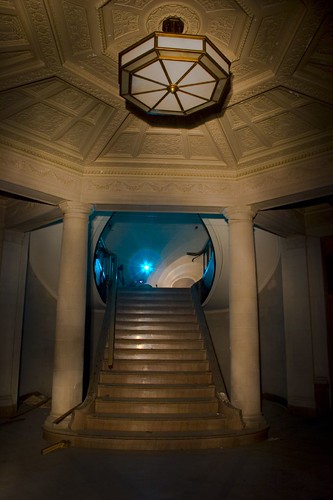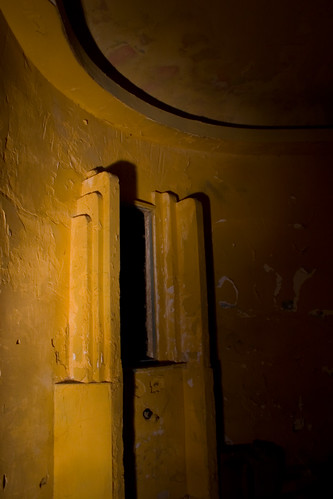Why Art and A.D.D. Don’t Mix
By Jonathan H
So the reality is that, I, Jon Haeber don’t have the requisite ability required of most artists; namely, the ability to draw. Don’t get me wrong, I can draw a stick figure with the best of ’em, and I’m sure, in another life, I could have been Scott Adams.
But to re-create, with my hands, the intricacy of a Michelangelo or the geometric intent of a DaVinci is completely beyond the realm of possibility for this lowly photographer. It is a large reason why I decided on the artistic outlet of photography, which a simple workaround for my gross ineptitude in the realm of drawing.
So, as an amateur artist, a thought hit my mind today, and I just had to put it down on paper (‘they’ really need to update that phrase, being as there’s not single sheet of paper to be seen.) Anyways, to avoid any further tangents, let me just relate to you my theory on art.
Long ago, mankind lacked the requirement for multi-tasking that is now a necessity, and the preponderance of messaging that is a reality. Art was something that needed to hit the senses. It needed to captivate. And it needed to not only re-create reality, but to enlarge its assets. Humankind suffered from a supreme dearth of human-created beauty. The works of the hand were not nearly as ubiquitous as they are today. For this reason, we began with movements like Classicism, with its large, shocking monuments and its calculated shapes and patterns.
Later, during the industrial age, we altered our perception of beauty to reflect our yearning for nature. True, much of this was due to artists like Thomas Cole, and theories coming from the transcendentalists. But, we must also consider the realities of living. Urbanism, crowding, dirty tenements, and the rise industry all contributed to this.
By the 1920s, we had cleaned up our cities, but we were being slammed with a barrage of messages, images, and theories. Our life was so full of the visual, the human-built, and the human-conceived — that we wanted things simpler, more elegant in their simplicity, and easy on the eyes. Thus the introduction of Art Deco in the mainstream, and later Art Moderne and the Modernist movement. Despite my love of Art Deco (it is perhaps my most favored artistic and architectural movement), I believe it to be — more than an original movement — a reaction to a world that moved too much.
By the mid-to-late 50s, we had the Pop artists – Roy Lichtenstein and Andy Warhol among the most famous.
What I mean to say, in this long drawn-out rant, was the reality of culture and how it affects our art. I’ll be bold enough to say that Pop Art represented one last shout at the world from artists. It was a satirical jab at society — an effort by artists to make us realize how slammed we are with images, messages, movies, media, theater, theories, and stories these days that we treat art as disposable – our culture requires it.
And in the midst of such a culture, Life Magazine could not exist (or at least in its once glamorous form), nor can a magazine like National Geographic focus on the beauty that it once did.
These days, we click on a link, consume, enjoy, and discard. Wash, rinse, repeat. It’s a process that society demands of our intellect, but it’s also a process we may not realize destroys the beauty of staring for hours at a Thomas Cole painting as if it’s a Where’s Waldo spread, or replaying the same bar from a Shostakovich score over and over again, imagining the destruction of Stalingrad with each jarring note.
I don’t mean to say that we’ve become desensitized, but I do believe that great art and A.D.D. don’t mix.



 Reddit!
Reddit! Del.icio.us
Del.icio.us Digg
Digg StumbleUpon
StumbleUpon Technorati
Technorati Blinklist
Blinklist Furl
Furl
It sounds like you’re creating problems yourself by trying to solve this issue instead of looking at why their is a problem in the first place
Arggg… I really don’t get what you mean with your last sentence…
I think your focusing more on your personal struggle/opinion and not the overall issue.
I’m an artist with ADD and find the biggest struggle is finding the intensive motivation, discipline, and organization required to be successful. In my own struggles I have found a career in commercial art is probably not a good choice for persons with ADD as well. Because so many people who suffer from ADD are creative and encouraged to explore this ability I believe this is an issue that needs to be researched are discussed more.
I am an artist and I have ADD. There was time when I couldn’t draw, but with a little instruction I lost that disability. Drawing is more about seeing than it is about putting marks on paper. I have to disagree about art and ADD except when it comes to commercial or production art. Being able to do something on your own terms is much different than having to do it whether you are focused or not.